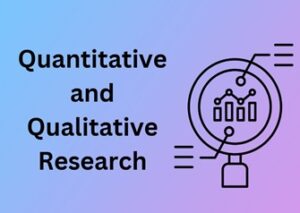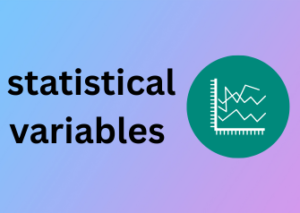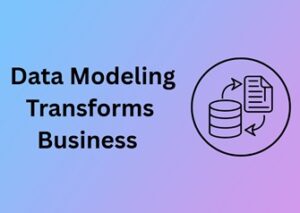Let’s jump into the fascinating world of Depth-First Search (DFS) one of the star players in graph traversal and problem-solving! If you’re new to this, don’t worry; I’ve got your back. We’ll keep things simple and intuitive. By the end of this, you’ll understand the “why” and “how” behind DFS, and it might even become your favorite algorithm!
Why Is DFS So Important?
Before we dive into the details, let’s understand what makes DFS so special in the first place. At its heart, this algorithm is all about diving deep into a structure to explore everything it can before moving on. Think of it like reading a book: you travel page by page, chapter by chapter, until you finish, without skipping around. It’s systematic, thorough, and works especially well when you need to explore every possible path in scenarios like:
- Solving puzzles (e.g., mazes).
- Finding connected components in a network.
- Checking if a graph is cyclic or acyclic.
In fact, DFS is foundational to many advanced algorithms used in modern computing. Sounds fun, right?
But Wait, What Exactly Is DFS?
If we were to personify DFS, it’s like an explorer with a laser-focus approach: it ventures as far as possible down one path before retreating and seeking an alternative. Here’s a friendly breakdown of its journey:
- Start from a given point (a node) in the graph.
- Mark it as visited so you don’t accidentally end up in an infinite loop.
- Explore one of its unvisited neighbors and repeat the same process.
- If you hit a dead end, backtrack to the previous step and try a different direction.
- Keep doing this until all nodes are explored.
You can perform DFS via two main approaches:
recursively (using function calls) or
iteratively (using a stack). Both methods follow the same fundamental idea.
A Visual Analogy of DFS
Imagine you’re in a gigantic library, and your task is to locate a specific book. You pick a random shelf, scan its contents top to bottom, then move to the next one only when the current one is fully examined. This deep commitment to a single path before moving on perfectly captures the essence of DFS.
Why Does DFS Feel Like Magic?
DFS shines in its ability to handle complexity with elegance. It may look unassuming compared to more advanced algorithms, but it’s amazingly effective. Need to navigate labyrinths? Find spanning trees? Detect connectivity issues or hidden patterns in a social network? This algorithm has your back — simple, powerful, and endlessly adaptable.
Not Just Depth-First: How Exploration Strategies Evolved Over Time
Let’s take a step back and appreciate the big picture for a moment: depth-first search (DFS) is just one small piece of the wonderful puzzle that is computer science. If you’ve ever looked at a labyrinth and thought, “What’s the best way to solve it?” you’ve already scratched the surface of search strategies. But here’s the deal DFS didn’t simply show up one day as the ultimate hero. Our strategies for exploration have evolved over time, shaped by clever minds eager to tackle the complexities of problem-solving. So grab your curiosity hat, and let’s embark on a journey through the evolution of exploration strategies!
It All Starts with a Question
There’s something exciting and timeless about the idea of searching, isn’t there? Whether it’s finding the shortest path, the optimal decision, or the diamond in the coal mine, the essence of problem-solving lies in asking, “What’s the best way to get there?” Early strategies of exploration were humble but essential. For example, consider the concept of breadth-first search (BFS). This “sibling” of DFS takes a different spin on exploring graphs or trees by checking all possible moves at one level before drilling deeper into the next.
Why does this matter? BFS laid the foundation for systematic thinking: “What happens if I handle all my immediate tasks first before worrying about the deeper stuff?” It’s practical, intuitive, and still widely used in algorithms today.
Enter Depth-First Search: A New Perspective
Then came the game-changer DFS which decided, “Hey, what if I dive down one path first, all the way to the bottom, before trying out another one?” This was revolutionary because it introduced entirely new ways of thinking about exploration. You’re no longer limited to shallow, broad strategies; instead, you can go deep down the rabbit hole.
But with DFS’s arrival also came questions like: How do we balance depth and breadth? How do we ensure we’re making smart choices about which path to go down? And thus, variations began to spring to life!
From Classic Roots to Modern Offshoots
The beauty of exploration strategies is that they’re flexible enough to evolve based on the problems we’re trying to solve. Let’s look at a few examples:
- Iterative Deepening Search: Imagine combining the best of BFS and DFS. This hybrid approach systematically searches in increasing “depths,” meaning it’s both comprehensive and memory-efficient. Genius, right?
- A* Search: Algorithms got even smarter with the introduction of heuristics. Now, instead of blindly exploring everything, clever strategies like A* guide us toward likely solutions faster by estimating costs along the way.
- Greedy Searches: Taking shortcuts sometimes pays off! Greedy algorithms focus entirely on what looks best now, optimizing for speed over perfection.
The Core Mechanics: Step-by-Step Process of Depth-First Search
Depth-First Search (DFS) might sound intimidating at first, but trust me, it’s just like finding your way through a maze. It’s all about persistence—picking a path and sticking with it until you’ve reached the end or hit a dead end before turning back. Let’s unravel the core mechanics step-by-step and build an intuitive understanding of how it works. Ready? Let’s dive in!
What Exactly Happens in DFS?
Think of DFS as a strategy where you explore as far as you can along one branch, before taking a step back and trying another path. The goal? To thoroughly explore all possible options in a structured, organized manner. This is particularly useful when tackling problems like traversing trees or graphs, where there are many possible paths to investigate.
The magic of DFS lies in its stack mechanism no fancy tricks, just the simple rule of “last in, first out.” Here’s how it all comes together:
Step-by-Step Breakdown
- Start at the root: The process kicks off by selecting a starting node (or vertex, if you’re dealing with graphs). This is generally the “root” of a tree or any chosen entry point in a graph.
- Mark the starting node as visited: Keep track of visited nodes. This is super important because it helps avoid revisiting the same place and getting into an endless loop.
- Explore a neighbor: From the current node, pick one of its unvisited neighbors. You “go deep” here, exploring as far along one branch as you can before backtracking.
- Push unvisited neighbors to the stack: A stack is your trusty sidekick here. Each time you have a new node to explore, you push it onto the stack. This helps keep everything organized, ensuring you don’t miss any possible paths.
- Repeat until no neighbors are left: As you dive deeper into each branch, you repeat the process for each new node—marking it as visited, exploring its neighbors, and pushing unvisited connections to your stack.
- Backtrack when needed: If you find yourself at a dead end (a node with no unvisited neighbors), it’s time to backtrack. Simply pop the last node off the stack and resume exploration from there.
- End when the stack is empty: The process concludes when the stack is empty, signaling that every possible path has been explored.
A Simple Example to Bring It All Together
Let’s say you’re navigating through a tree with nodes labeled A, B, C, D, and E. Here’s how DFS plays out:
- Start at A, mark it as visited, and push it to the stack.
- Move to B (a neighbor of A), mark it, and push it to the stack.
- Continue deeper to C, then D, following the same steps.
- Oops—D has no unvisited neighbors? Time to backtrack to C.
- Still no new paths from C? Back up to B, and so forth, until every node has been checked.
When and Why: Real-World Cases Where Depth-First Search Excels
You’ve probably heard of Depth-First Search (DFS) as one of those “classic” algorithms, often accompanied by graphs, trees, and thick textbooks. But beyond a computer science classroom, when does DFS actually shine? Turns out, DFS is a quiet hero in many real-world applications. Let’s explore some compelling scenarios where it excels and why it’s such a go-to tool in the problem-solving toolkit.
The Perfect Fit for Maze Solving
Picture yourself navigating a maze. Do you methodically explore every possible path or single-mindedly head straight down one corridor until you hit the end? DFS takes the second approach. It dives deep into one path, then backtracks upon hitting a dead end.
DFS is ideal for this because it efficiently explores paths without retracing its steps unnecessarily. For example, in video games where players move through dungeon-like environments, DFS is often the algorithm powering the behind-the-scenes navigation logic. It operates simply with stacks (whether explicit or the call stack of recursive functions), making it lightweight and super effective for this type of problem.
Tree Traversal: Family Trees and Beyond
Trees aren’t just for organizing data in neat hierarchies; they’re everywhere in real-world systems, from family genealogy to organizing files on your computer. DFS is fantastic for traversing tree structures, especially when you want to move through one branch thoroughly before checking others.
A great example is navigating decision trees in artificial intelligence. Let’s say you’re building a recommendation system for online shopping. DFS can help by diving deep into product categories, ensuring all options in a specific branch are explored before backtracking to others. That way, insights flow seamlessly from its traversal.
Solving Puzzles and Word Games
Fans of solving puzzles like sudoku, crosswords, or word-search games, this one’s for you. DFS often underpins the logic engines behind these games. Why? Because puzzles typically revolve around exploring possibilities, and DFS systematically eliminates invalid ones.
Take, for example, solving sudoku: DFS tests numbers in each empty cell, one value at a time, to see which combinations ultimately satisfy the puzzle’s rules. It’s a meticulous process, but DFS keeps the exploration orderly and efficient.
Hidden Gems: Web Crawling

If you’ve ever wondered how search engines index the internet’s vast web pages, here’s a fun fact: DFS is one of their secret weapons. Web crawlers use DFS (and its sibling, breadth-first search) to hop across linked web pages. DFS can dive deep into a chain of linked pages, grabbing all content it finds before backtracking to another path.
- Why it works: It minimizes memory usage since it doesn’t need to store every page it ever visited.
- Pro tip: This can be especially handy for smaller, single-site crawling where efficiency matters more than breadth.
Critical Pathfinding in Networks
Networks, whether they’re social networks like Facebook or communication networks like the internet, are just sprawling graphs. DFS is often used to unravel these webs to find hidden paths. For instance:
- Discovering all “friends of friends” in a social network.
- Determining if one networked device can directly or indirectly connect to another in real-time communication systems.
In both cases, DFS’ ability to follow paths deeply without distractions makes it invaluable.
From Theory to Machines: How AI Adopts Depth-First Thinking in Problem Solving
So, you’ve learned that Depth-First Search (DFS) is not just a theoretical concept but a methodical strategy that scrupulously dives deep into solving problems. But what if I told you that Artificial Intelligence (AI) has taken this iconic strategy and supercharged it for solving real-world, complex situations? Let’s unbox how AI borrows this classic algorithm and turns it into an essential player in the problem-solving arena!
Why Does AI Love Depth-First Thinking?
Picture a robot tasked with navigating a vast maze. It could wander aimlessly, or it could act methodically by exploring one path to its conclusion before backtracking when applicable. That’s DFS in a nutshell, and it’s why AI engineers are drawn to its elegance. This method aligns naturally with how AI systems break down intricate problems:
- Resource-Conscious: By committing to one path at a time, DFS minimizes memory usage compared to exhaustive approaches like Breadth-First Search.
- Focused Exploration: Depth-first thinking in AI avoids clutter by delving deep into each possibility without spreading itself too thin across numerous options.
- Builds Problem-Specific Heuristics: AI can use DFS as a fundamental building block for creating algorithms tailored to specific goals, like finding an optimal solution faster.
Applications in AI: Where Depth-First Thinking Shines
Now comes the fun part how does AI implement DFS in its problem-solving processes? While DFS isn’t always a one-size-fits-all algorithm, it’s found a comfortable home in several AI-driven domains:
- Puzzle Solving: From games like Sudoku to solving Rubik’s Cubes, DFS works wonderfully for searching through all possible solutions systematically.
- Pathfinding in Graphs: AI systems, like those used in navigation software or video games, channel DFS logic to explore paths efficiently (especially when no additional state dataset is available upfront).
- Decision-Making in Competitive Games: Take chess as an example. AI can use a DFS-like strategy when evaluating potential moves, going several steps deep to assess outcomes.
Case in Point: AI and Constraint Satisfaction Problems
Constraint satisfaction problems (CSPs) are a class of challenges where AIs must find solutions that meet a specified set of rules (or constraints). Think scheduling staff for a company while ensuring no one is overbooked or matching students to classrooms while keeping class sizes balanced. Using DFS as part of a backtracking algorithm, AI can explore potential assignments, discarding failures and zeroing in on valid outcomes a key component in real-world automation.
Challenges and Creative Tweaks
While DFS offers a robust framework, AI often adapts and tweaks the process to address potential limitations:
- Handling Infinite Loops: AI engineers design strategies to prevent getting stuck in circular paths, such as adding depth limits or tracking visited nodes.
- Incorporating Heuristics: In many cases, AI combines DFS strategies with heuristic methods like A* Search to speed up results while focusing on promising solutions.
- Balancing Depth and Breadth: Sometimes, pure DFS isn’t ideal, so AI algorithms use hybrids like Iterative Deepening Search, which adaptively combines DFS’s depth with breadth traversal.
Optimizing the Search: Common Pitfalls and How AI Avoids Them
When navigating the maze of Depth-First Search (DFS), it’s all too easy to stumble into traps that can slow down or derail your progress altogether. Do not fret, though! Machine learning and AI have mastered the art of sidestepping these hazards, setting a great example for how we can optimize our own DFS implementations. Let’s unpack some of the most common pitfalls and learn the clever ways AI works around them.
1. Getting Stuck in Infinite Loops
A classic beginner’s mistake: not accounting for circular paths or revisiting nodes endlessly. Without mechanisms to track visited nodes, DFS can spiral into an endless loop, wasting both time and resources.
How to avoid this: Use a visited set or a similar structure to keep track of nodes you’ve already processed. By ensuring you don’t revisit nodes unnecessarily, you can steer clear of infinite loops and operate more efficiently.
How AI does it: AI search algorithms like those found in pathfinding (e.g., in robotics or video games) incorporate robust memory management systems to prevent revisiting nodes. They use hashmaps or specialized data structures that let them balance speed and memory consumption effectively.
2. Overloading the Call Stack

DFS is a recursive algorithm by nature, which means it digs deep literally. But in doing so, it risks consuming too much stack memory, leading to stack overflow errors. This can be especially problematic when dealing with deep or infinite graphs.
Solve it like a pro: Instead of relying on recursion, consider converting DFS into an iterative process using a stack data structure. It gives you finer control over memory, making your implementation less prone to crashes.
AI twist: Many AI systems use this iterative approach, particularly for solving real-world problems involving massive or dynamic datasets. This avoids relying heavily on system-level details like recursion depth, making them far more durable.
3. Tunnel Vision on Depth
DFS has a tendency to race down paths in pursuit of depth, sometimes at the cost of missing better solutions that might lie closer to the starting point.
Fix the focus: Combine DFS with a backtracking mechanism or a priority system to reassess paths as needed. It’s a bit like having checkpoints or “undo” buttons in place.
In AI: Smart decision-making systems often use hybrid approaches, overlaying algorithms like DFS with heuristics borrowed from Breadth-First Search or A* Search. This ensures they don’t lose sight of better pathways while diving deep into the problem space.
4. Not Accounting for Goal Conditions
Another common oversight is failing to define criteria to determine success. Without clear goal conditions, your DFS may either wander aimlessly or over-process nodes it doesn’t need to touch.
Pro tip: Always define your destination and end conditions before starting the search. This focuses the algorithm and prevents unnecessary exploration.
AI’s approach: Goal-oriented AI, such as in autonomous systems, emphasizes clear end-point definitions. This is why they often integrate cost functions, enabling them to converge efficiently on meaningful answers.
5. Rigid Implementation
Sometimes the problem isn’t with DFS itself but how it’s implemented. Failure to tailor DFS to the specific graph structure, dataset, or problem requirements often results in subpar performance.
Customizing for success: Adapt DFS to fit your graph’s characteristics. For instance, on sparse graphs, focus on efficient edge traversal, while dense graphs may benefit from prioritization systems.
What AI teaches us: Adaptive algorithms are at the heart of how AI works. By analyzing the dataset properties in real time, AI systems modify their strategy on-the-fly for optimal results—something we can aim to replicate in our designs.
Diving Deeper: Enriching Depth-First Search for Intelligent Choices
So, we’ve laid the foundation of Depth-First Search (DFS), understood its mechanics, and explored situations where it shines. But let’s pause for a moment, what happens when we stop thinking about DFS as just a basic algorithm and instead consider how to make it smarter, faster, and more adaptable? Today, we’re unpacking how to enhance this classic search strategy for sharper thinking and more practical applications. Let’s dive in!
Make It Memory Wise: Limiting the Depth
One common critique of DFS is its tendency to go really, really deep—sometimes unnecessarily. Enter *depth-limited search*, a simple yet impactful enhancement. By limiting how far the algorithm can go in one branch, you can avoid getting tangled in infinite loops (hello, infinite graphs!) and keep the algorithm efficient even in sprawling search spaces.
Here’s a real-world example: Imagine you’re mapping possible moves in a chess game, and each potential move generates thousands of new game states. Depth-limiting lets you cap exploration, stopping the search at a fixed depth—say, three moves ahead. This not only saves memory but helps focus on short-term strategies rather than wandering endlessly.
Prevent Revisit Chaos: Tracking Visited States
Have you ever retraced your steps in a maze, only to realize you’re back exactly where you started? DFS tends to make the same mistake in scenarios with loops and revisitable nodes. So, how do we stop the madness? We introduce a **visited set**!
- By keeping a list of nodes the algorithm has already visited, DFS skips redundant searches, speeding up the process significantly.
- This is especially handy in problems like finding routes on a map, where roads (edges) between cities (nodes) often loop back on themselves.
Pro tip: Avoid bloating your visited list unnecessarily by clearing it out periodically when certain nodes are guaranteed irrecoverable.
Discover Smarter Paths with Weighted DFS
Classic DFS doesn’t care which path it explores first, but what if you want it to prioritize smarter or cheaper routes? Introducing weighted or cost-aware DFS, a twist where paths are assigned “weights” or “costs.” The algorithm then favors cheaper paths first, even if they are deeper down the tree.
For example, say you’re building a navigation app that calculates a walking route. You know traversing a rocky trail (high cost) will take twice as much effort as a paved road (low cost). A weighted variant of DFS would avoid the rocky trail unless the paved path isn’t available!
Blend It With Iterative Search
Not sure how deep you need to search? Here’s a game-changing combo: *iterative deepening depth-first search* (IDDFS). This hybrid approach gradually increases the depth limit, performing DFS repeatedly with small, incremental limits. It’s like peeling an onion, layer by layer—ensuring shallow solutions aren’t overlooked while allowing deeper exploration over time.
This technique is widely used in AI, particularly in large or unpredictable search spaces like decision-making systems or puzzles (looking at you, Sudoku solvers!).
DIY Enhancements: Tailoring DFS to Your Needs
The beauty of DFS lies in its flexibility. From prioritizing discovery order to incorporating heuristic approaches (a fancy way of saying “rule of thumb shortcuts”), you can tweak DFS to fit your specific problem. Let creativity shine—DFS can be baked into anything from video game pathfinding to automating business processes.











